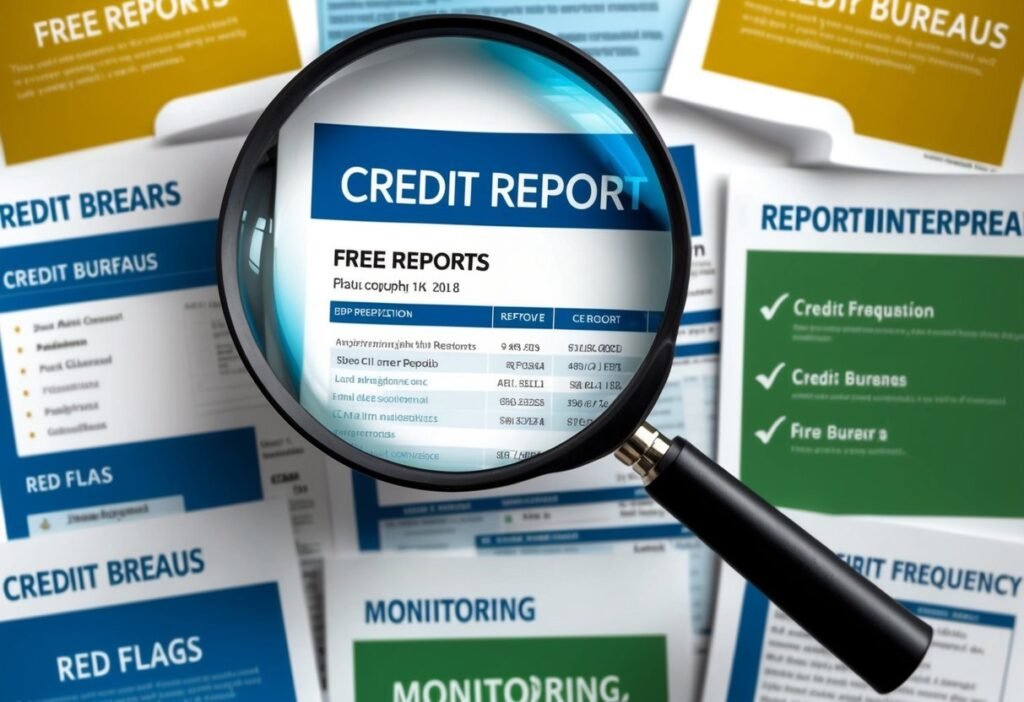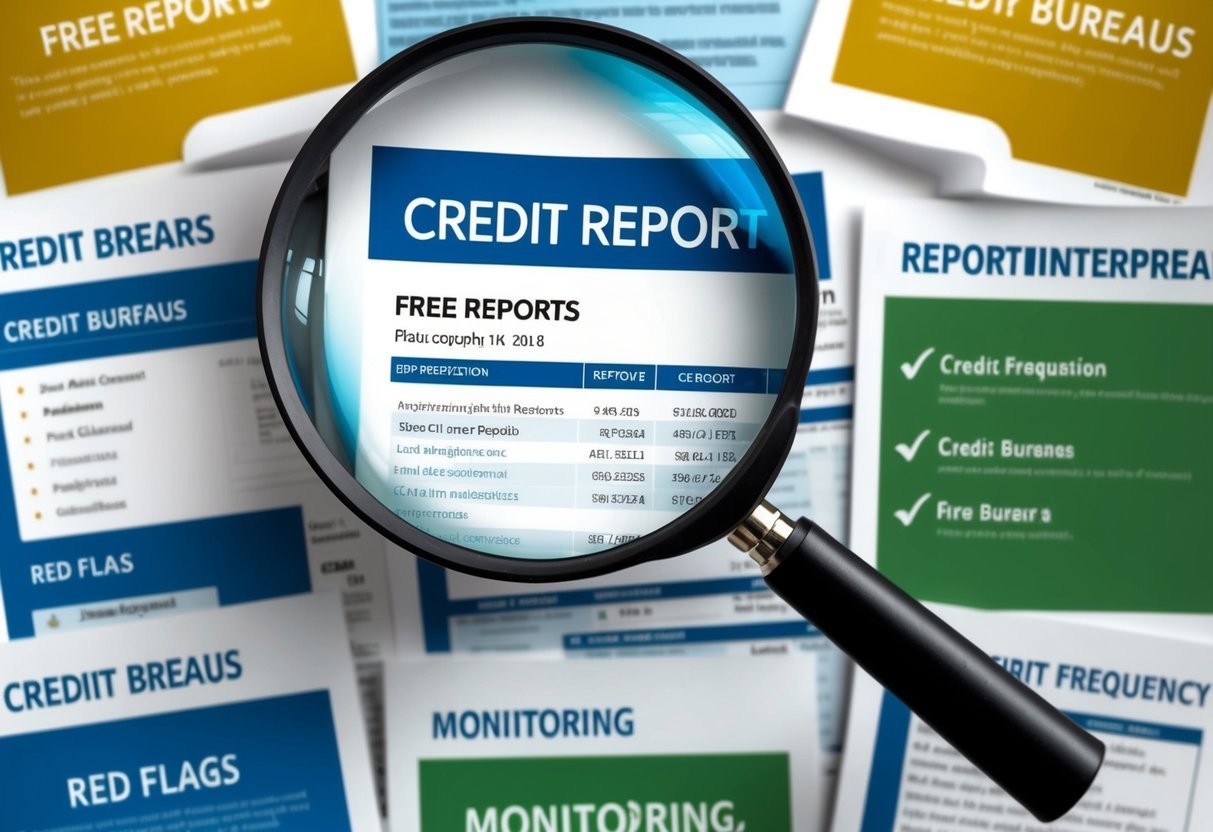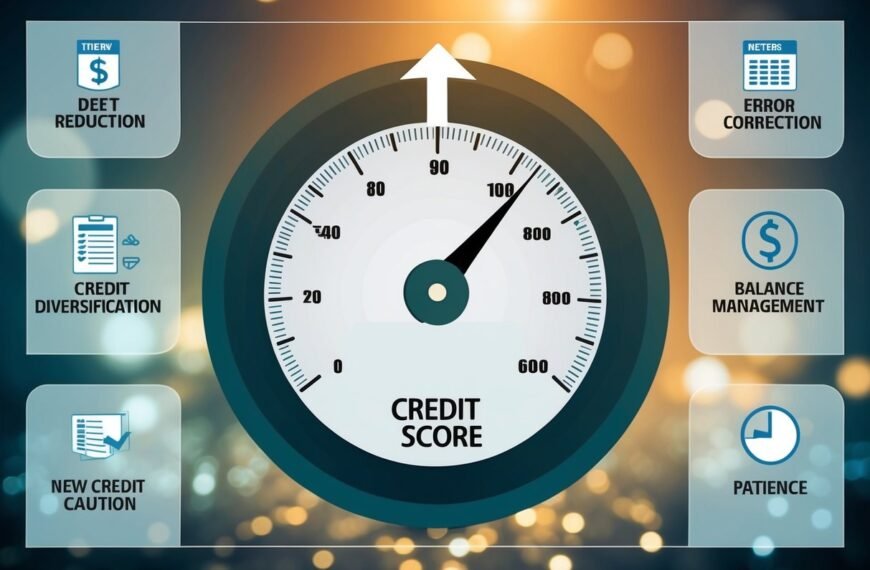
Explore the earlier installment of this series in Part 2-The Role of Financial Coaches in Credit Improvement to build a comprehensive understanding before delving into this chapter.
In this chapter, you will learn all the essential steps to stay on top of your credit score. The article covers the importance of regular credit score monitoring, understanding your credit report, obtaining your free credit report, the role of credit bureaus, interpreting your credit report, spotting red flags, and the frequency of credit report checks. By following these steps, you can gain a clear picture of your credit situation, spot any errors or red flags, and take control of your financial well-being. So, let’s get started on the path to financial empowerment!
Obtaining Your Free Credit Report
Introduction to AnnualCreditReport.com
Welcome to the world of credit monitoring! One of the first and most important steps in keeping track of your credit health is obtaining your free credit report. AnnualCreditReport.com is a trusted website authorized by the government to provide individuals with free access to their credit reports from the three major credit bureaus – Equifax, Experian, and TransUnion. This user-friendly platform makes it easy for you to obtain your credit reports and stay informed about your financial standing.
Requesting Free Credit Reports from the Three Major Bureaus
To request your free credit report, all you need to do is visit AnnualCreditReport.com and provide some basic personal information. This information is necessary to verify your identity and ensure that only you have access to your credit report. Once your identity is confirmed, you will be able to view and download your credit reports from all three major credit bureaus. It’s important to remember that you’re entitled to one free credit report from each bureau every 12 months.
Understanding Your Rights Under the Fair Credit Reporting Act (FCRA)
As a consumer, it’s essential to understand your rights when it comes to your credit information. The Fair Credit Reporting Act (FCRA) is a federal law that regulates how credit reporting agencies collect, use, and share your credit data. Under the FCRA, you have the right to access your credit reports, dispute inaccuracies, and have any errors corrected by the credit bureaus. By familiarizing yourself with your rights under the FCRA, you can navigate the credit monitoring process with confidence.
Credit Bureaus and Their Role
Overview of Credit Bureaus (Equifax, Experian, TransUnion)
Credit bureaus, such as Equifax, Experian, and TransUnion, play a significant role in collecting and maintaining your credit information. These bureaus gather data on your credit history, including your payment history, credit limits, and outstanding balances. They receive this information from various sources, such as financial institutions, lenders, and even public records. Each credit bureau operates independently, which is why it’s crucial to monitor all three reports to get a holistic view of your credit health.
What Each Bureau Collects and Reports
While the three major credit bureaus collect similar data, there may be slight variations in the information they report. For example, one bureau may include a certain credit account that the others don’t. It’s important to note that each bureau has its own methods for collecting and reporting data. However, the main categories of information collected by credit bureaus include personal information, credit accounts, public records, and inquiries. Understanding what each bureau collects and reports will help you gain a comprehensive understanding of your credit situation.
The Importance of Checking All Three Reports
Checking all three credit reports is crucial because each bureau may have different information or credit errors. Discrepancies in credit reports can negatively impact your credit score and overall financial health. By regularly monitoring all three reports, you can identify errors, inaccuracies, or fraudulent activity that may be present on one or more of your reports. Addressing these issues promptly can help you maintain a strong credit profile.
Interpreting Your Credit Report
Breaking Down the Sections of a Credit Report
A credit report consists of several sections that provide a detailed snapshot of your credit history. These sections include personal information, credit accounts, public records, and inquiries. Personal information includes your name, address, Social Security number, and employment history. The credit accounts section lists all your credit accounts, their balances, payment history, and credit limits. Public records contain information about bankruptcies, tax liens, and civil judgments. Lastly, the inquiries section displays a list of entities that have accessed your credit report.
How to Identify Errors or Inaccuracies
When reviewing your credit report, it’s essential to carefully examine each section for any errors or inaccuracies. Look for discrepancies in personal information, such as incorrect addresses or misspelled names. In the credit accounts section, check for any accounts that you didn’t open or any missed payments that you believe were made on time. Pay close attention to the public records section to ensure that any negative information is accurate and up to date. Identifying errors or inaccuracies is the first step in rectifying them and ensuring an accurate representation of your credit history.
Understanding the Importance of Account Statuses
Account statuses are indicators of how well you manage your credit. They provide valuable information to lenders and creditors about your payment behavior. Generally, account statuses can be classified as “Current,” “Closed,” “Late,” or “Charge-off.” A “Current” status indicates that you’re up to date with payments. A “Closed” status means that the account has been paid off or terminated. A “Late” status suggests that you’ve missed payments, while a “Charge-off” status indicates that the creditor has given up on collecting the debt. Understanding these statuses will help you assess your creditworthiness and take the necessary steps to improve your credit.
Spotting Red Flags
Signs of Identity Theft or Fraud
Unfortunately, identity theft and fraud are serious concerns in today’s digital age. It’s crucial to keep an eye out for any red flags that may indicate you’ve become a victim. Signs of identity theft or fraud on your credit report can include unfamiliar credit accounts, incorrect personal information, unexpected changes in credit limits or balances, or inquiries from unfamiliar entities. If you notice any of these warning signs, it’s important to take immediate action to protect yourself and prevent further damage to your credit.
How to Handle Suspicious Activity on Your Report
If you spot suspicious activity on your credit report, follow these steps to mitigate the potential damage. Contact the creditor or financial institution associated with the suspicious account and inform them of the fraudulent activity. Place a fraud alert on your credit reports to notify lenders that you may be a victim of identity theft. File a report with your local law enforcement agency and the Federal Trade Commission (FTC) to document the incident. Keep detailed records of your interactions and any supporting documentation you gather. Acting swiftly is crucial in minimizing the impact of identity theft or fraud on your credit.
Reporting Errors and Disputing Inaccuracies
In addition to reporting identity theft or fraud, it’s essential to address any errors or inaccuracies that you find on your credit report. Each credit bureau has a process for disputing information and correcting errors. Visit the websites of Equifax, Experian, and TransUnion to find detailed instructions on initiating a dispute. Provide supporting documentation, such as payment receipts or account statements, to strengthen your case. The credit bureau will investigate your dispute and make the necessary corrections if they determine that the reported information is inaccurate. Regularly checking your credit report and taking prompt action to dispute errors will help maintain an accurate credit history.

The Frequency of Credit Report Checks
How Often Should You Check Your Credit Report?
Regularly checking your credit report is a proactive approach to monitoring your credit health. It’s recommended to review your credit reports at least once a year, as you are entitled to one free report from each bureau annually. However, considering the potential impact of errors or fraudulent activity, many experts advise checking your reports every four months – rotating among the three bureaus. By spacing out your checks throughout the year, you increase the likelihood of catching any issues that may arise.
The Benefits of Regular Monitoring
Regular monitoring of your credit reports offers several benefits. First and foremost, it allows you to detect and address any errors, inaccuracies, or fraudulent activity promptly. By identifying and resolving these issues, you can protect your credit score and financial well-being. Additionally, regular monitoring provides insight into your credit utilization, payment behavior, and overall creditworthiness. This information can help you make informed financial decisions and work towards improving your credit score over time.
Setting Up Reminders for Future Checks
To ensure that you don’t forget to check your credit reports on a regular basis, it’s helpful to set up reminders. Use a calendar or an online task management tool to schedule reminders every four months. Plan these reminders well in advance, so you have ample time to review your reports and take any necessary actions. By making credit report checks a routine part of your financial management, you’ll stay on top of your credit health and maintain a strong financial standing.
Conclusion
Recap of Key Steps to Monitor Your Credit Score
Keeping track of your credit score and credit reports is an essential aspect of financial well-being. By following these key steps, you can effectively monitor your credit score:
- Obtain your free credit reports from AnnualCreditReport.com.
- Understand your rights under the Fair Credit Reporting Act (FCRA).
- Familiarize yourself with the role of credit bureaus and check all three reports.
- Interpret your credit report by reviewing each section and identifying errors or inaccuracies.
- Recognize red flags that may indicate identity theft or fraud and take immediate action.
- Report errors and dispute inaccuracies promptly with the credit bureaus.
- Regularly check your credit reports to ensure accuracy and protect your credit standing.
The Empowerment of Knowing Your Credit Situation
By actively monitoring your credit score and credit reports, you gain a sense of empowerment and control over your financial life. Knowing your credit situation allows you to make informed decisions when it comes to applying for loans, mortgages, or other lines of credit. It gives you the opportunity to address any issues promptly and maintain a healthy credit profile. With a strong credit history, you can secure better interest rates, higher credit limits, and overall financial stability.
Teaser for Upcoming Blogs in the Series
This article is just the beginning of your journey into credit score monitoring. In our upcoming blogs, we will delve deeper into topics such as credit repair strategies, building credit, and maximizing your credit score. Stay tuned for more valuable information to help you navigate the world of credit and achieve your financial goals.
Credit score monitoring is not just a one-time task. It requires consistent effort and attention to ensure the accuracy of your credit reports and the protection of your credit health. By following the steps outlined in this article, you can take control of your financial well-being and pave the way for a bright financial future.
Discover more in Part 4-Building a Solid Credit History.









